Stoke Bruerne, Grand Union Canal
10 July 2004
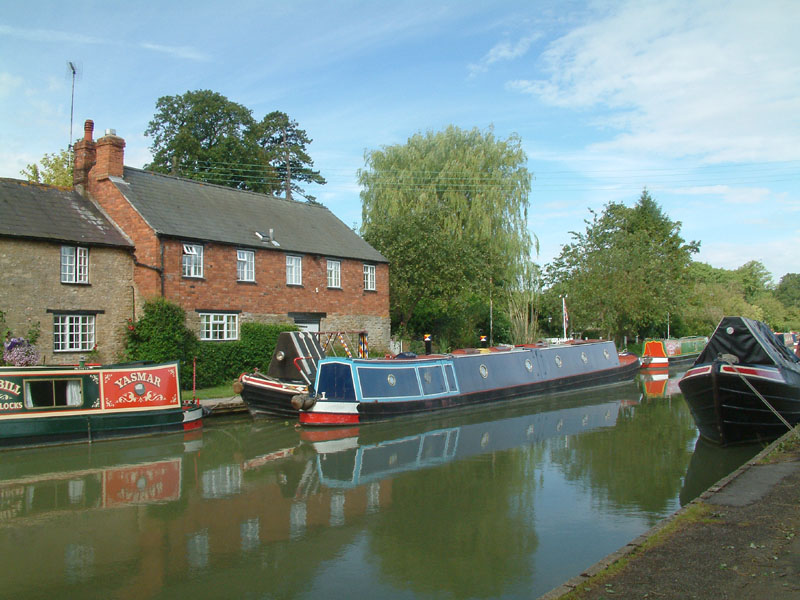
A quiet Saturday morning at the picturesque village of Stoke Bruerne in
Northamptonshire, on the Grand Union Canal
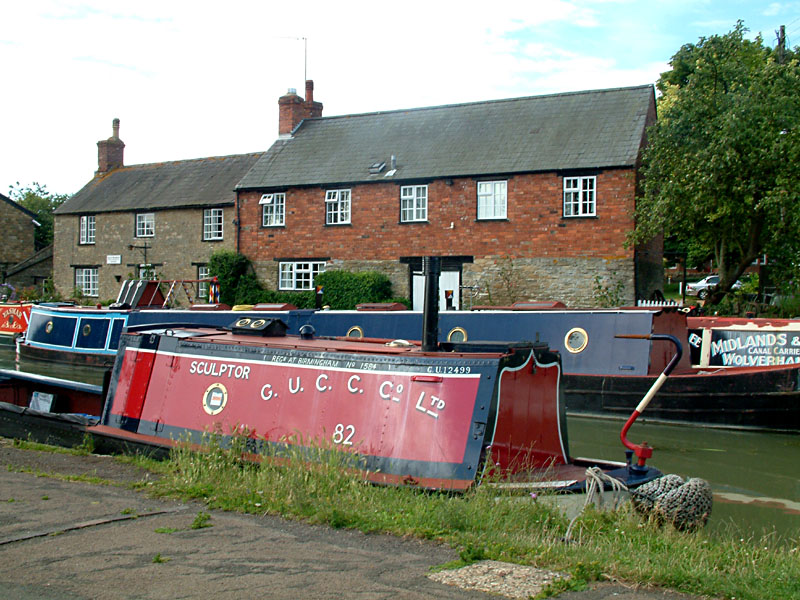
Sculptor is a motorboat of the Grand Union Canal Carrying Co. Ltd. and was
built at Northwich by Yarwoods in 1935. She is of composite construction, i.e. a
riveted iron hull with elm bottoms, the cabin being riveted steel. She carries
the simplified wartime livery of the G.U.C.C.Co. Ltd. During the war, Sculptor
operated as a fire-boat with the London Fire Service.
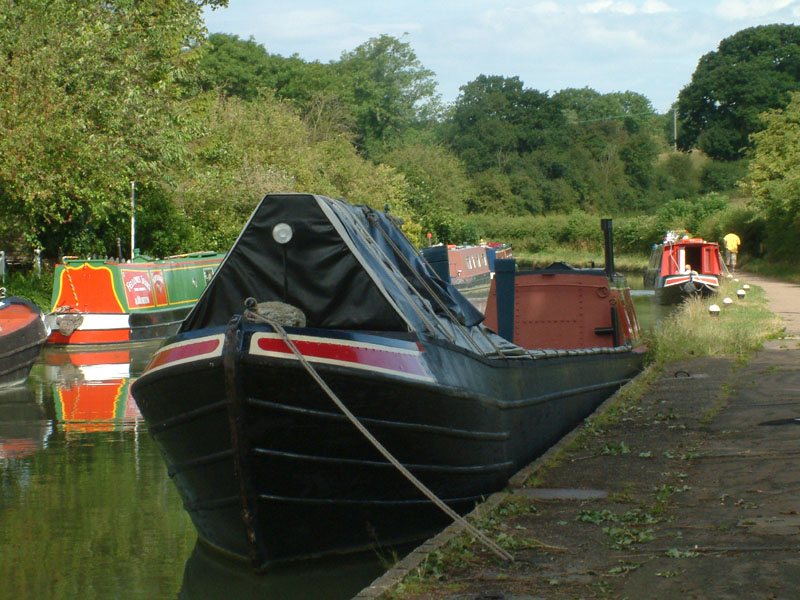
Following nationalisation of the waterways, Sculptor and sister boats Scorpio
and Sagitta were transferred as maintenance boats to the Shropshire Union Canal
in 1949. Her water-cooled Russell Newbery twin cylinder diesel engine was
replaced by a 1960 Lister HA2 air-cooled diesel which powers her today. Length
71'6", beam 7'0", draught 3'.
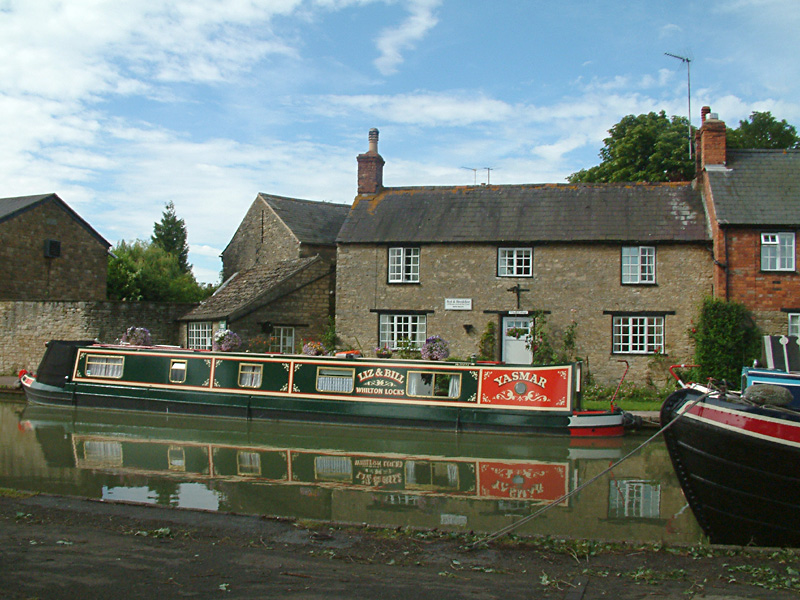
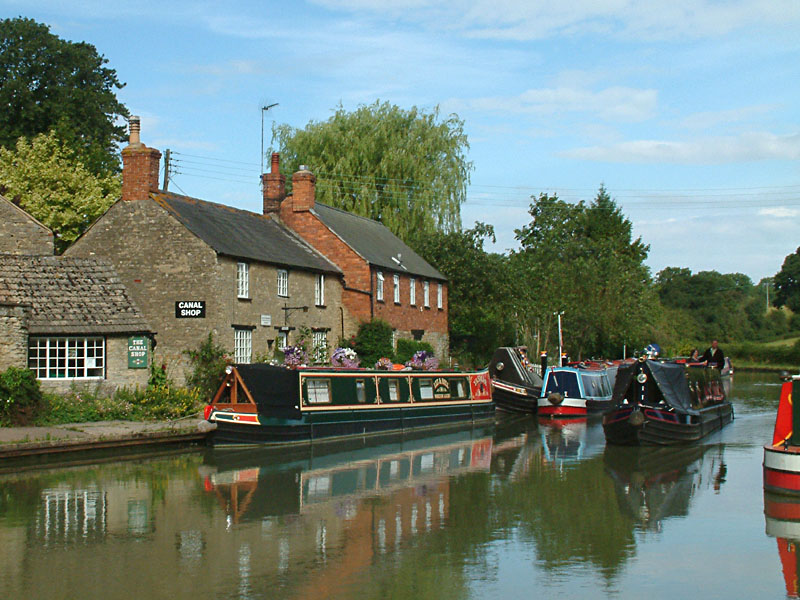
A boat on the move passes the canal shop
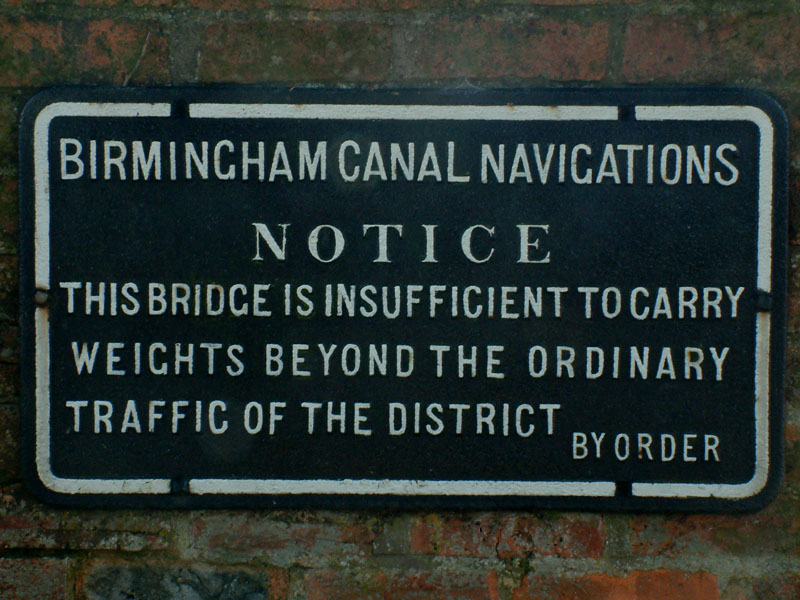
By the Stoke Bruerne canal museum, various bits from around the network have
been placed, now looking slightly out of place
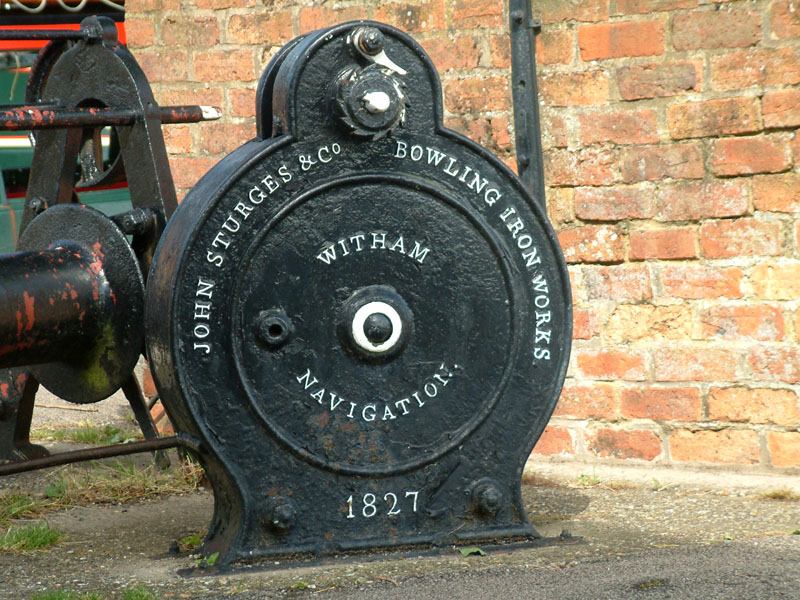
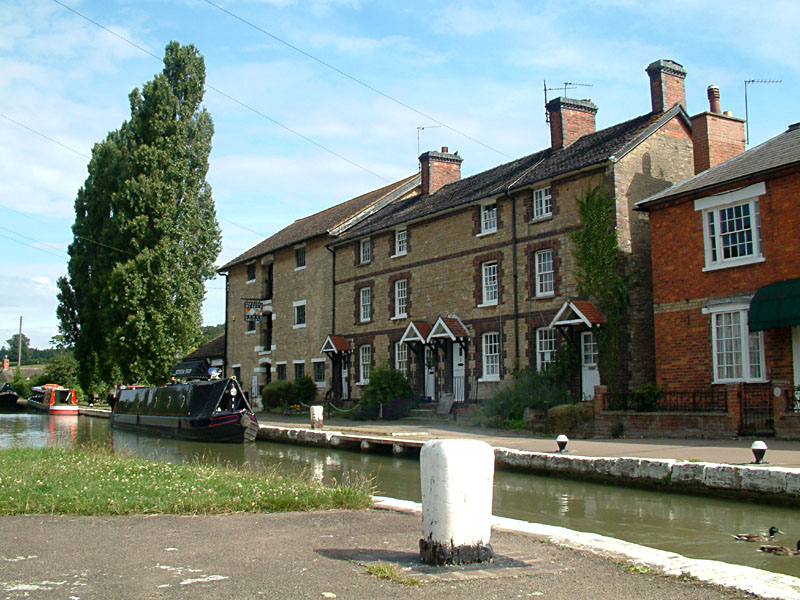
In high season, and later in the day, this location is extremely popular, but
manages still to retain its integrity. This is a canal village with few equals,
the cottages and other buildings having their front doors on the canal, rather
than back doors as is more usual, which gives it huge charm.
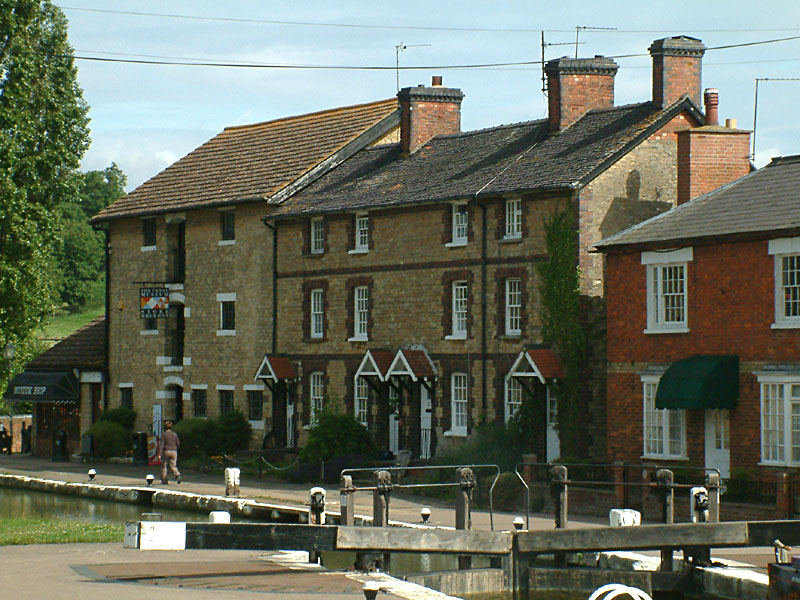
The canal museum (left of picture), housed in a corn mill which closed in the
early 20th century, opened in 1963. The museum itself has a fascinating range of
exhibits, and the shop has a superb range of canal literature, possibly the best
in the country.
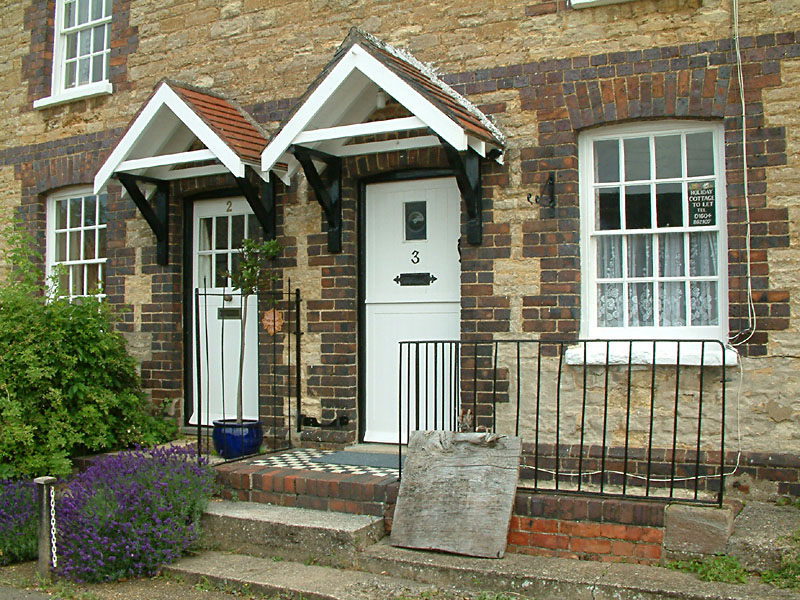
Holiday cottages for let, with an old lock paddle sitting by the doorstep.
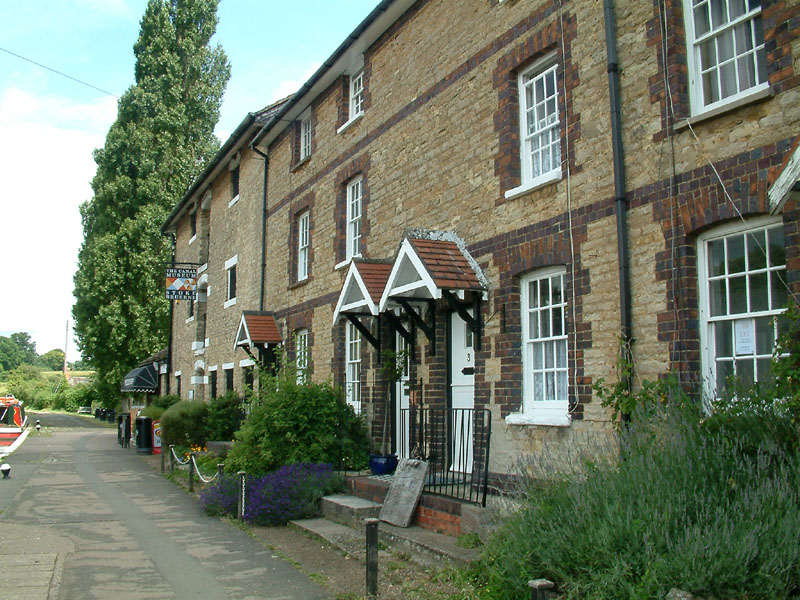
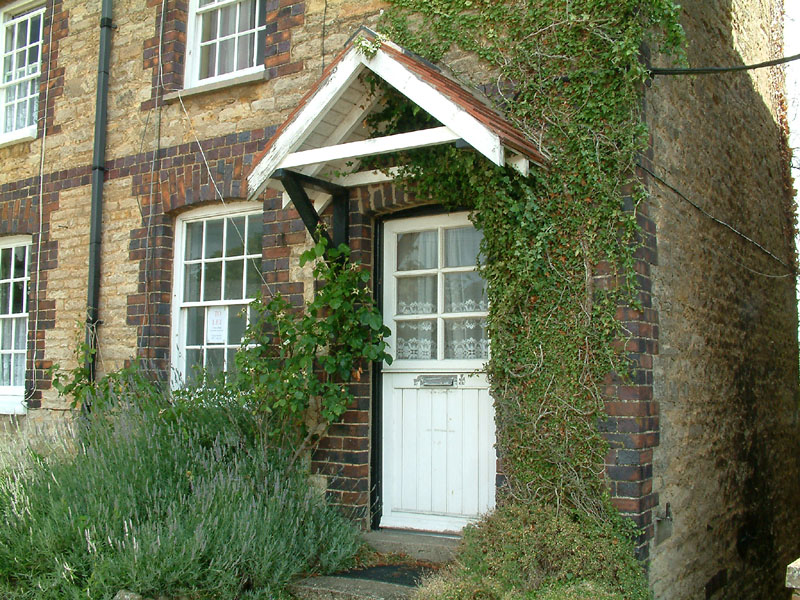
The cottages were originally used by workers at the corn mill, and more recently
by canal employees.
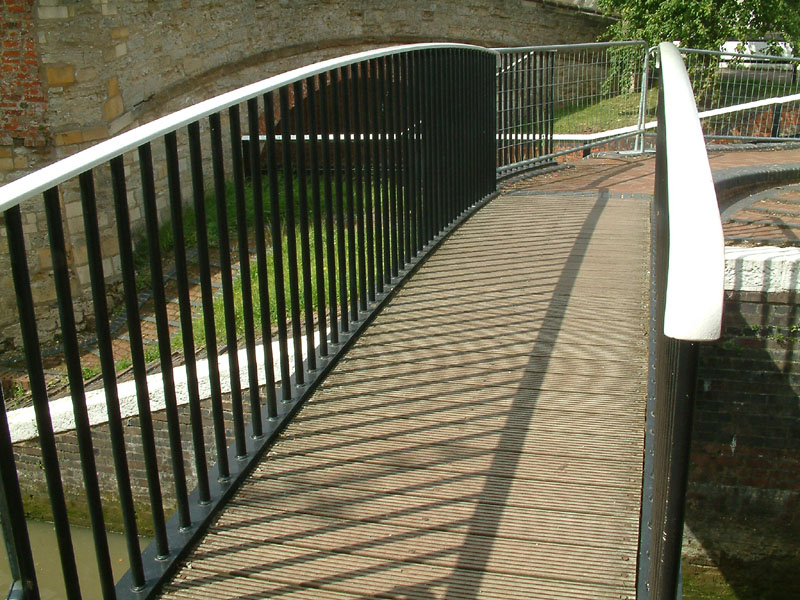
The modern bridge over the tail of the lock fits in well, sadly marred by the
very incongruous stainless steel railings beyond
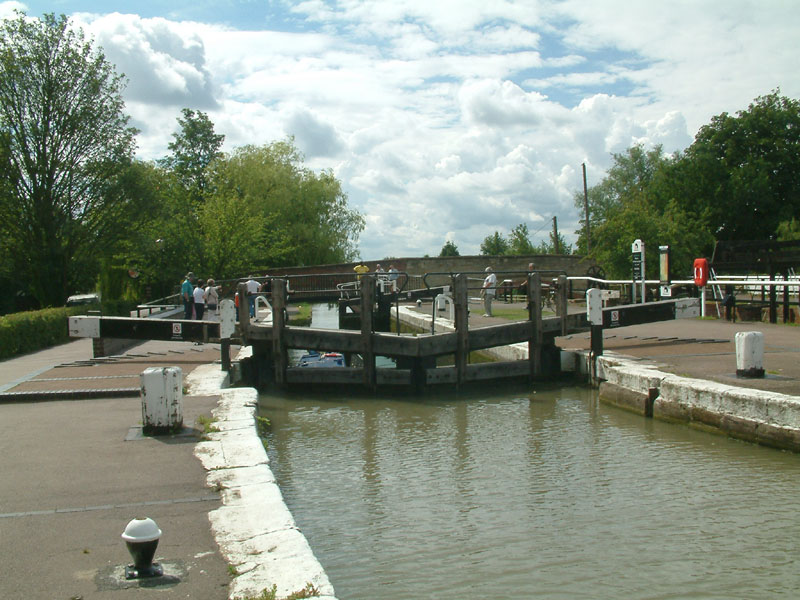
Boats coming up the top lock, the seven Stoke Bruerne locks raising the canal
56ft to the pound 294ft above sea level which runs for some 14 miles to the
Buckby Locks
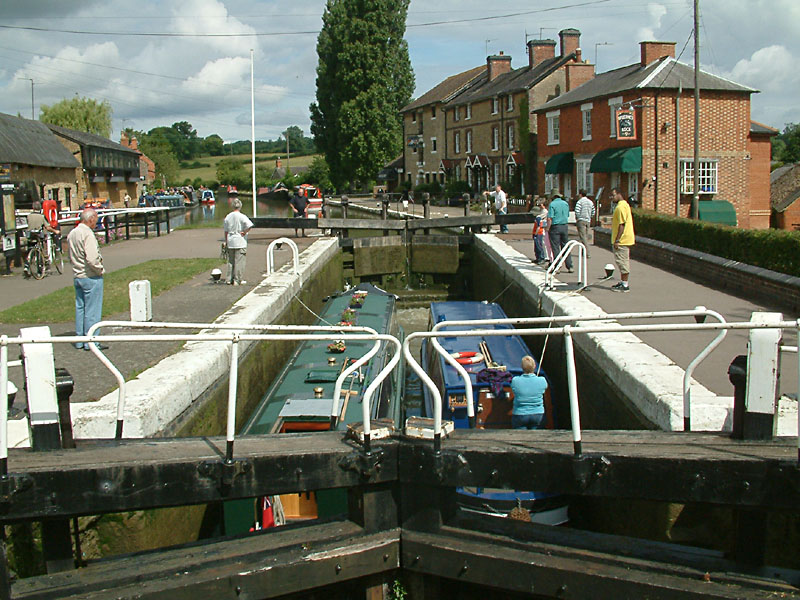
As the boats rise, they get their view of the old corn mill, workers cottages,
and an impressive brick house of Georgian style, for many years a shop catering
for the needs of boating families, and now housing a restaurant.
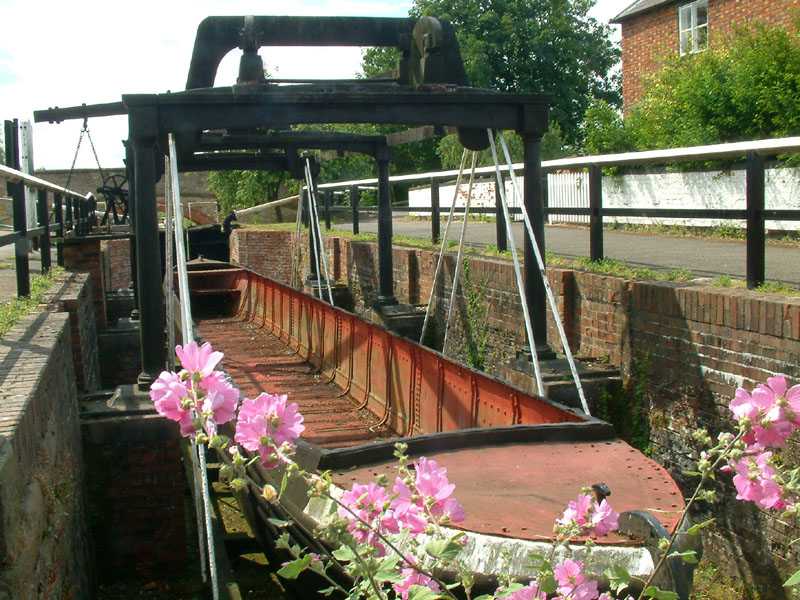
To the west of the lock now in use is the original lock, nowadays home to a
boat-weighing machine from the Glamorganshire Canal and a Birmingham Canal
Navigations "station boat".
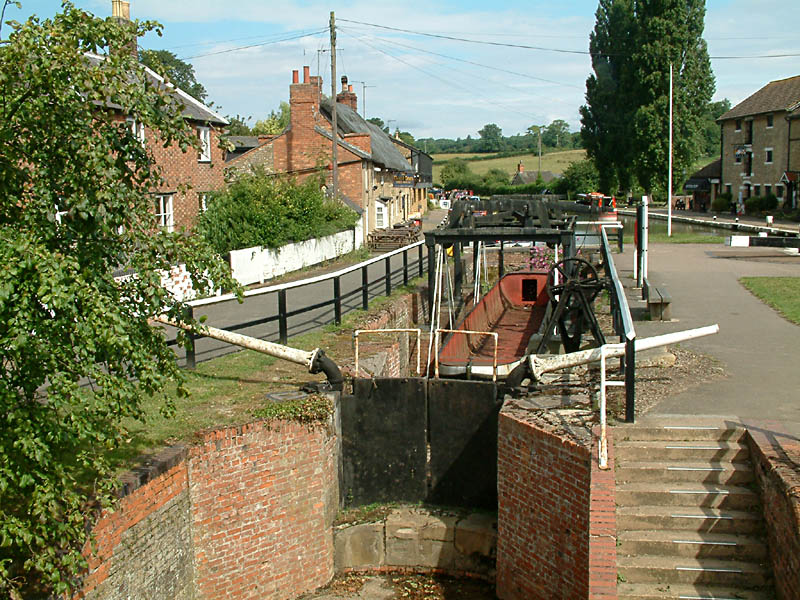
The original lock from the bridge
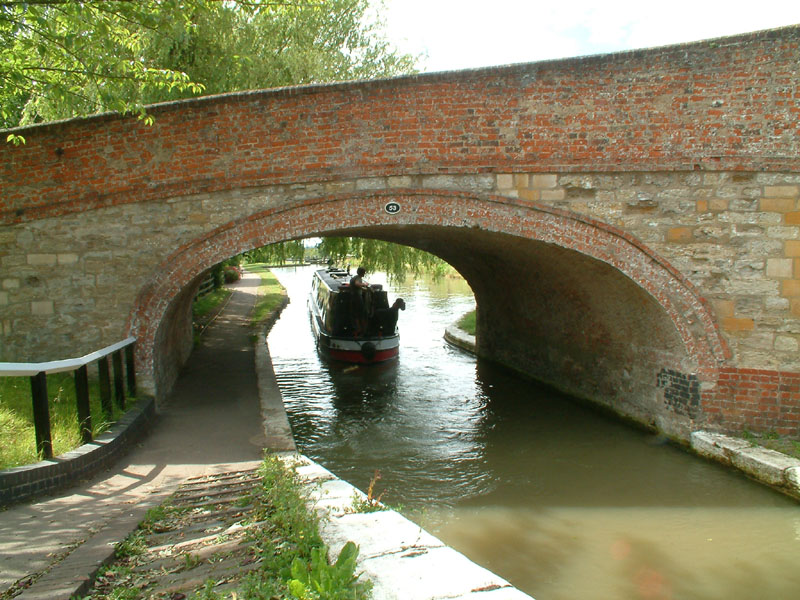
The bridge, extended to this second, skew arch when the locks were duplicated
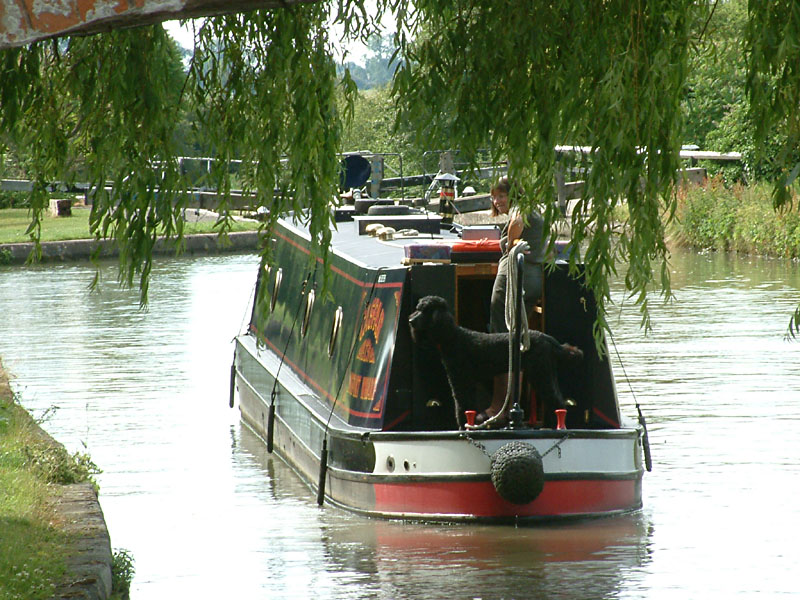
The boat makes its way south down the lock flight
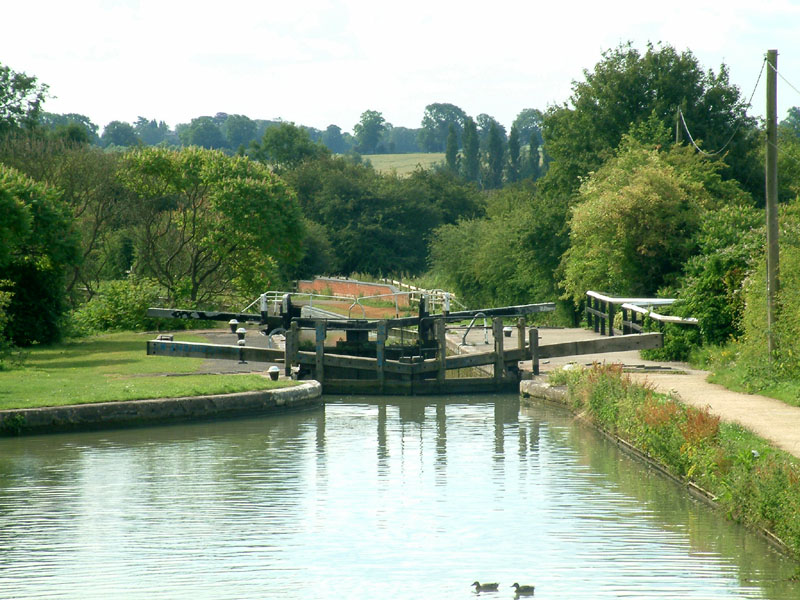
A short walk down to the second lock...
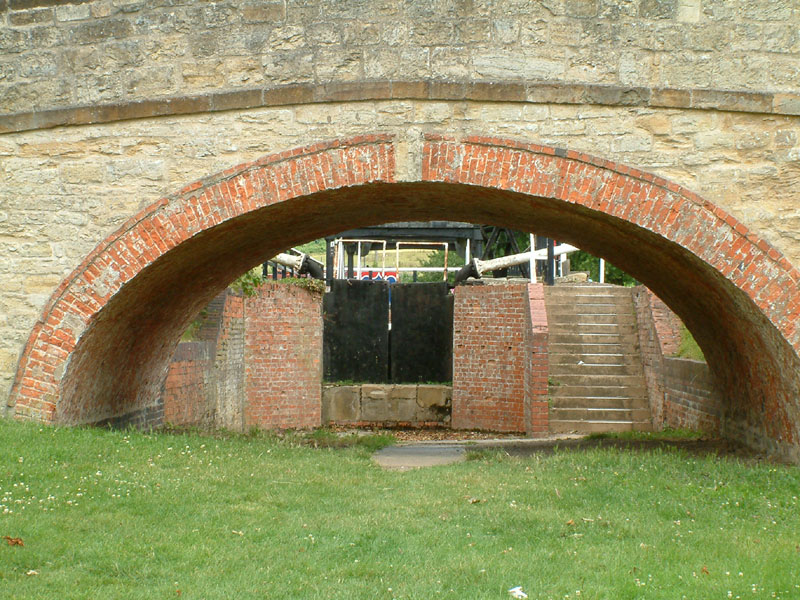
The view of the original lock from below
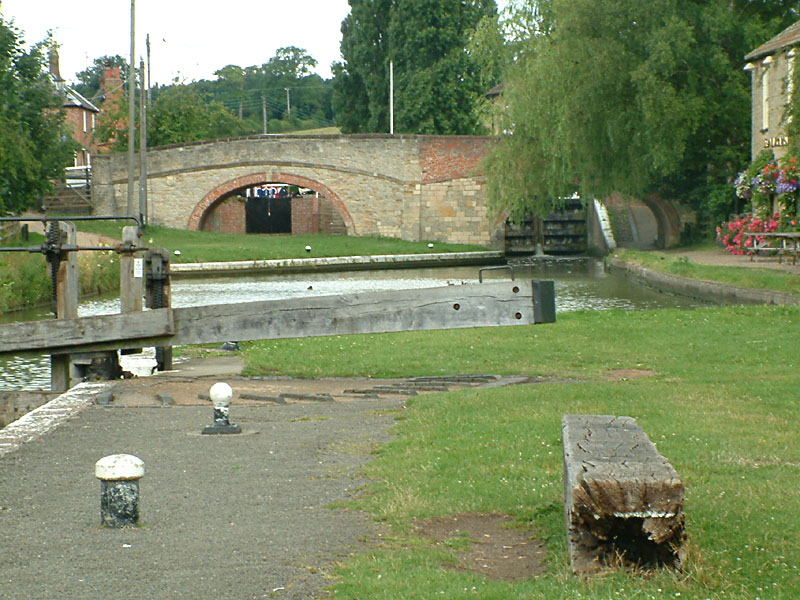
From the second lock, the double-arched bridge, now rather a mishmash, shows the
rather more elegant lines that the original (left-hand) arch had before the
duplication of the locks
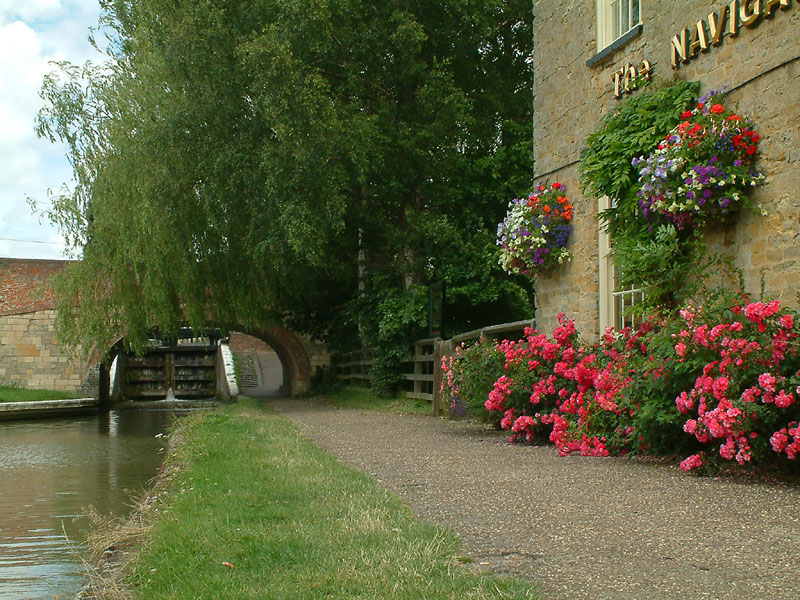
Looking back to the top lock from The Navigation pub
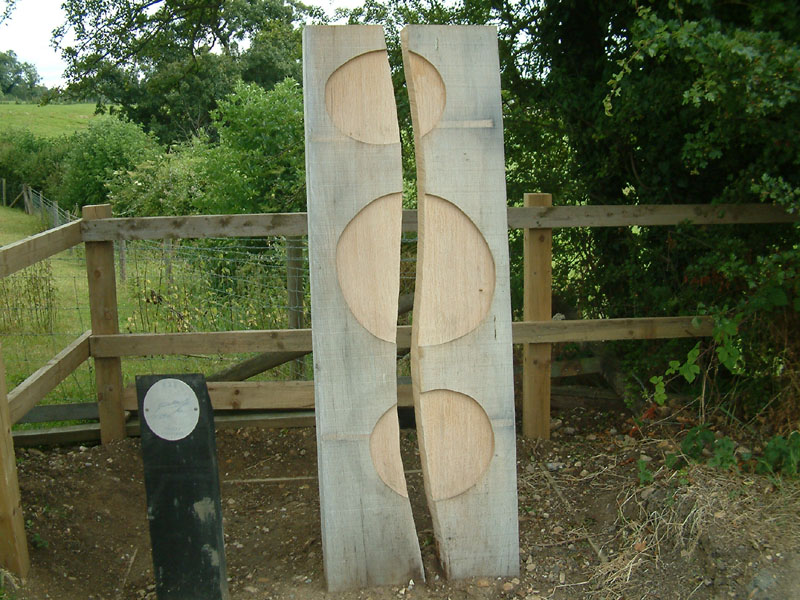
On a walk past the lock towards the tunnel, this impressive piece of oak invites
intriguing questions about what this piece of modern art is symbolising,
particularly in connection with the plate to the left stating "Rectory Fish
Pools". However, as I pondered this, a nearby boater said that she had been told
that the "holes" are to contain brass rubbings, and that it doesn't symbolise
anything at all.
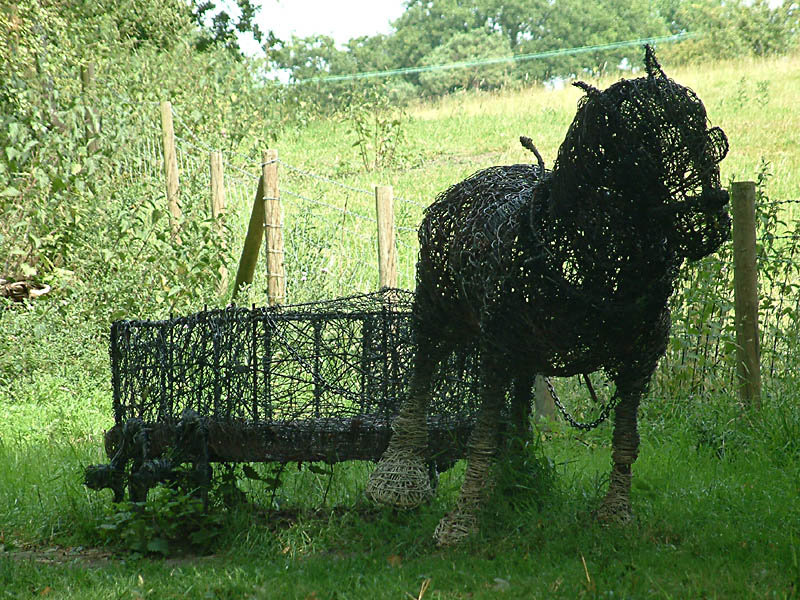
This interesting piece of art reminds us that, by the time the rest of the Grand
Junction Canal had opened between London and Braunston in 1800, the bit of the
canal from Blisworth to the bottom of Stoke Bruerne locks hadn't been finished,
and the gap was filled by a temporary tramway over the top of the hill, and
goods transhipped from boat to wagon and back again. The tramway, built in 1801,
was Northamptonshire's first railway. The tunnel was finally opened in 1805, and
the rails used to connect the main line to the River Nene until the branch canal
to Northampton was built.
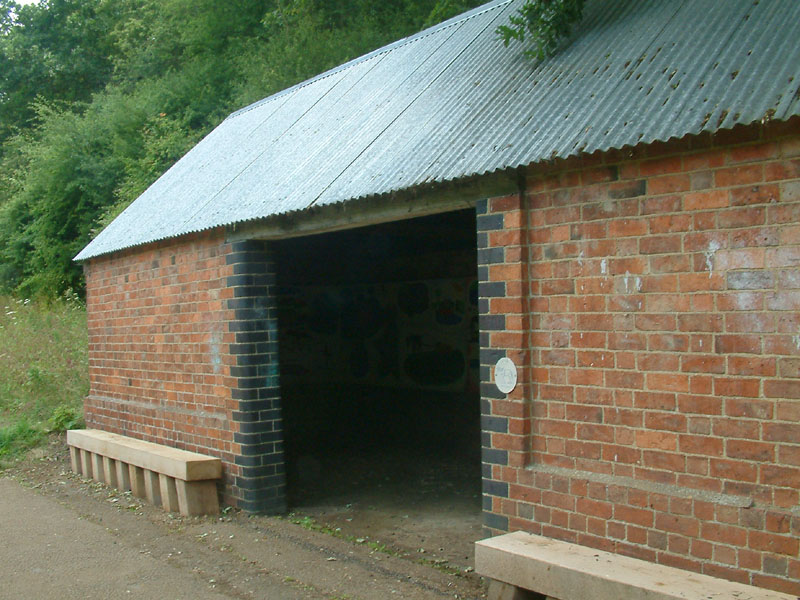
The "Old Stables", now home to some art by younger visitors to the canal
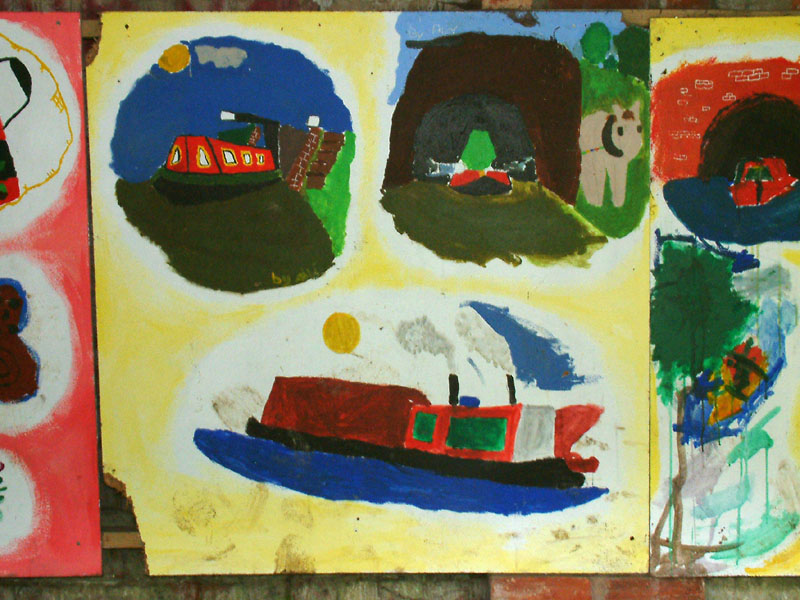

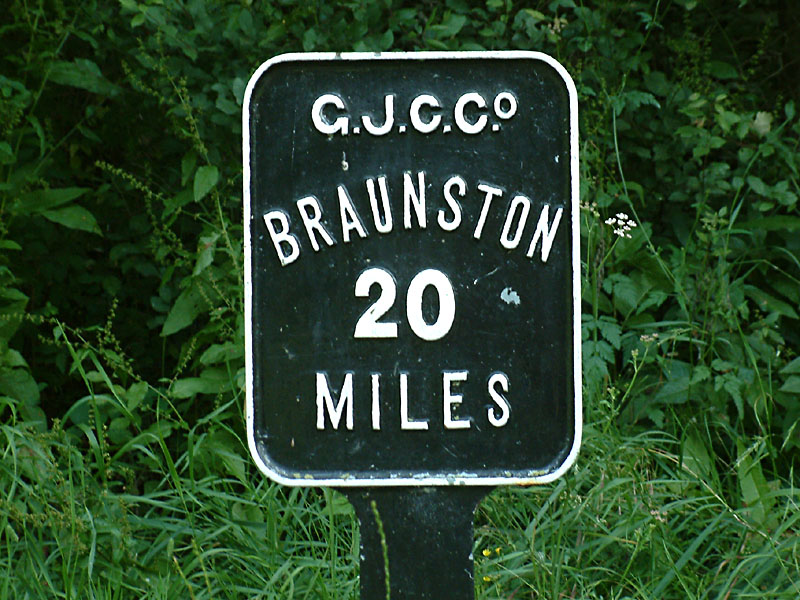
The sign on the approach to the tunnel tells the boater how far to Braunston,
the northern end of the Grand Junction Canal, where it meets the Oxford Canal
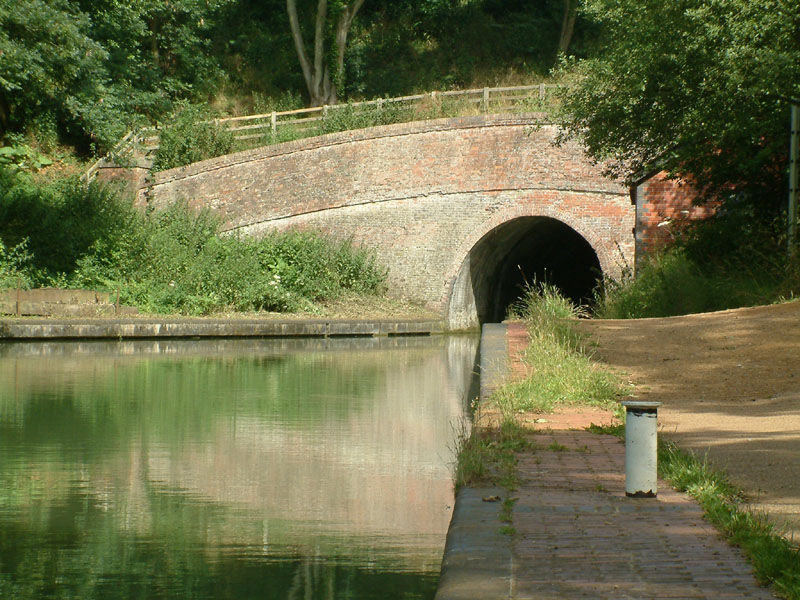
The southern portal of Blisworth Tunnel, which at 3076 yards (2.81km) long is
the third-longest navigable canal tunnel in England after Standedge and Dudley
(and the ninth-longest in the world).
|